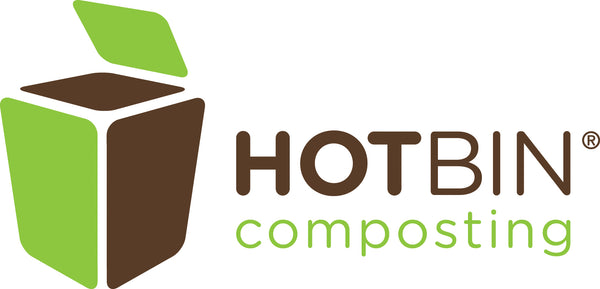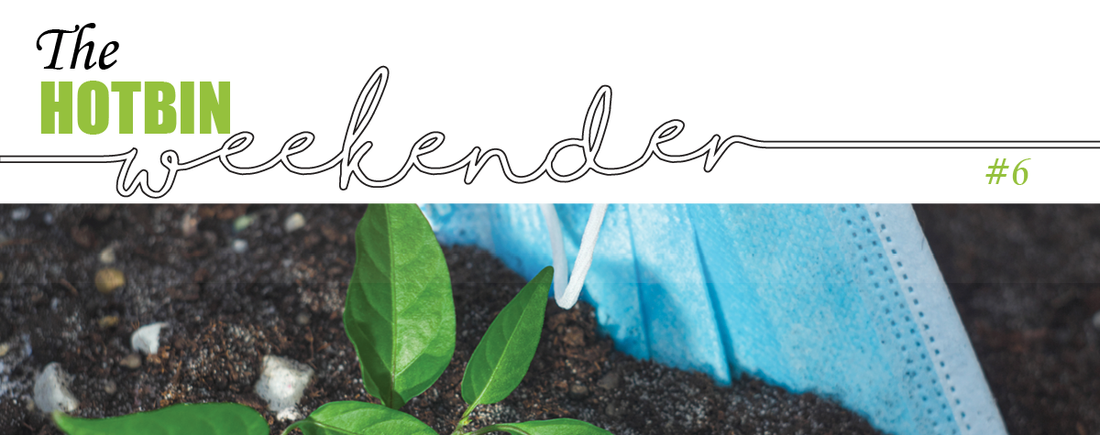Climate change discussions are all over the news these days. Talking about how we can make a contribution to reduce GHG (Greenhouse Gas) emissions is a conversation that is very much related to our product, and one that we would like to include in this and future editions.
As the main image of this edition conveys, Composting at Home has been selected as 1 of 24 ways for us to make a direct impact to reducing carbon footprint and GHG emissions. Also in this publication a good amount of questions are being answered related to the challenges of composting in winter, finding material to compost this season, where to locate our composting bin. Our favorite 90 second video that explains how HOTBIN works. We hope you enjoy this edition.
Did you know? Composting Food & Garden Waste at home is 1 of 24 ways to make a direct impact and reduce carbon footprint and GHG emissions?
In the U.S., food waste generates the equivalent of 37 million cars’ worth of greenhouse gas emissions (GHG) annually. According to a University of Oxford study, the food supply chain is responsible for about a quarter of all worldwide GHG emissions. GHG are gases that has the property of absorbing (trapping) infrared radiations emitted from the earth’s surface and re-radiating it back to the earth surface (atmosphere). Methane emissions produced by food-waste buried on landfills and carbon dioxide emissions created by transporting food waste, are two of the GHG emissions related to food-waste, that we can reduce by composting at home.
Composting at home, not only significantly reduces these emissions, but also turns your food waste into stable soil carbon that can be used as fertilizer. Installing a backyard compost bin is a good way to start and make some fertilizer to use in your garden.
If you haven’t started yet… there are tons of composting device options in the market to pick from. Start composting at home today… and you will be lowering your personal carbon footprint and reducing the amount of greenhouse gases in the atmosphere. In addition, you will be contributing to a positive ripple effect, by normalizing a more sustainable way of living and by helping to change prevailing attitudes.
Can I start composting or compost at all in winter? It is absolutely possible to continue successfully composting during the winter. The only time decomposition comes to a stop, is when the materials in your composting pile are completely frozen. If you have a HOTBIN, this is almost impossible, if you are frequently feeding your pile with new batches of waste (don’t forget adding shredded paper and mulch in the right proportions). This will keep the bacteria active and the composting pile warmth.Do compost heaps work in winter? A healthy compost pile needs to be kept up all year long, even in the cold, dark days of winter. The decomposition process does slow some when composting during winter as the temperature drops, but bacteria, molds, and mites all survive and need energy to do their jobs. This makes regularly feeding your composting pile with a fresh ‘batch’ critical to keep it going!
Can You Compost Year-Round? Yes! Just because the temperatures dip down low doesn't mean you have to hang up your composting hat for the year. Winter composting is a great idea; you have a way to use all those kitchen scraps you generate during the holidays and make compost for your upcoming gardening season.
Can starting a compost pile in fall possible? The answer again is yes. You can start a compost pile any time of the year. However, fall is the time of year when both nitrogen and carbon materials are readily available… so start composting today if you haven’t started yet.
Should I cover my compost pile? If you own a HOTBIN, you do not need a cover. If you own a different composting bin, adding a cover can limit airflow and water, thus interfering with the composting process. In other words, check the manufacturing instructions, but a general answer to this question is no.
Should I cover and protect finished compost? Yes. You should cover finished compost. Otherwise, if it's exposed to the elements, the compost will break down further and lose nutrients as they leach onto the surrounding soil.
How do I re-start my composting bin? If you own a HOTBIN… grab and follow the instructions related to using the plastic kick-start bottle that comes with the device. The heat will revive the composting pile by promoting maximum bacterial activity. If you do not own a HOTBIN, follow the manufacturer's instructions on how to revive or start-up your composting device once it goes cold.
“I was able to compost even during last winter’s coldest day in Chicago” – Click to download or read the complete testimonial by Henry Schmidt from Chicago.
Lastly, enjoy our favorite 90 second video that explains how HOTBIN works to produce mulch in 30 days and compost in just 90 days!
Enjoy your weekend!

